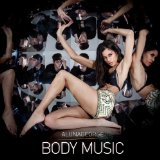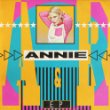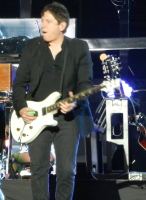I first saw Bobby Bandiera play in June 1995 at The Leadmill in Sheffield as part of an unplugged-style tour with Southside Johnny. I know; it’s a huge surprise that I was at a Southside Johnny gig, but you have to take my word for it. Looking back at it with the benefit of nearly twenty years of hindsight, the tour was probably an attempt to find out if Southside still had a following in the UK and whether a tour with a full band was a viable proposition. On the night, Johnny and Bobby were outstanding; it’s surprising how much variety you can squeeze out of two voices, a guitar and a few harmonicas. They played every request that came from the audience and proved that good songs are still good songs when all of the arrangements are stripped away. Before the gig, I knew that Southside was a great singer and harmonica player; after the gig, I knew that Bobby Bandiera was a hugely talented guitar player and a very, very good singer.
Bobby played in various bands on the Jersey shore following his debut in 1968, building a reputation as a gifted player and was considered as a replacement for Steve Van Zandt in The E Street Band for Springsteen’s “Born in the USA” tour. It didn’t happen, but in the following year he joined Southside Johnny and The Jukes, following the departure of Billy Rush and kicked off a collaboration which has lasted for nearly thirty years. I’m guessing that playing in The Jukes isn’t as lucrative as playing in the E Street Band, but it has other rewards.
I’ll come back to this later, but I truly respect any musician who naturally leads a band (whether it’s as a singer, guitarist or songwriter, and Bobby is all three) and can also take a back seat for a while and just be one of the players; Jimi Hendrix couldn’t do it, and he wasn’t the only one. When Bobby joined The Jukes they were mainly functioning as a live act and releasing albums that only the dedicated fans were buying but, from the very start to the present day, they remain a live phenomenon and Bobby has always been a perfect fit for Southside’s live performances. I’ve heard a story, from someone who knows, that Southside always likes to test any new Jukes (and there have been plenty of those) by suddenly, mid-gig, calling a tune that they haven’t rehearsed. I’m willing to bet that he never caught Bobby out that way because according to Billy Walton, another hugely versatile frontman and supporting guitarist, Bobby’s memory for songs is legendary.
There must have been a settling-in period but I’m guessing that it didn’t take very long for Bobby to become a perfect foil for Southside and give the singer a chance to drop down a few gears during live sets by passing the baton to his guitarist for a few songs. Leading any band isn’t easy, especially if you’re talking about nine or ten musicians and having Bobby Bandiera as a trusted lieutenant (in the same way that Springsteen has Steve Van Zandt in the E Street Band) helped keep the Jukes a tight live unit while adding another great voice to the mix. Any musician who joins The Jukes has to be a gifted player; you don’t play the same set night after night and you never know which song (or version of a song) is coming next. Apart from the challenge, the upside of this is that the musicians never get bored or complacent.
During twenty years with the Jukes, Bobby has also released three solo albums and continues to play live in New Jersey with the Bob Bandiera Band whenever he’s not touring in his current day job . Did I forget to mention that Bobby has been touring as part of Bon Jovi’s live set-up since 2005 in a supporting role? He’s usually described as rhythm guitarist, but I’m going to get all controversial on you here and say that there’s much more to it than that; the reason that Jon Bon Jovi wanted Bobby Bandiera in the touring band is that he needed a safe pair of hands. If your lead guitarist has had well-documented substance and reliability problems, then you need a reliable backup plan and Bobby Bandiera is about as reliable as they come; a tremendous guitar player who also adds very strong vocals. In April 2013, Richie Sambora left the tour at short notice and, in Canada, for one night only, Bobby Bandiera shook off the rhythm guitar tag and took on all the guitar duties, doing the job that he was brought in to do. It didn’t last long, as another shredder, Phil X, was brought in the next day to replace Sambora. And that incident kicked off all the predictable online spats between fans and friends on various sides of the debate (and not a serious word from any of the protagonists).
For what it’s worth, I’m not keen on bands bringing in extra players (for whatever reason)without giving them full bandmember status but, ultimately, it’s up to the players involved to do what they think is right. I don’t think you can criticise a musician for taking a supporting role which (presumably) pays well without the dubious benefit of a spotlight and big-screen shot; it’s a hard world out there as a professional musician and it’s getting harder.
I know it’s difficult if you live in the UK, but the best way to appreciate the artistry of Bobby Bandiera is to see him live. You can find YouTube clips of “C’mon Caroline” and covers of “Like a Hurricane” and “Baba O’Riley”, but the quality’s variable at best, and it’s almost impossible to find his albums online (at least at anything less than eye-watering prices). So, I guess the best I can hope for is that Jon Bon Jovi takes an extended break and Bobby comes back to the UK on the next Jukes tour; it’s unlikely but if it does happen, Music Riot will let you know about it then it’s up to you to go out and see him.
Some guitar players throw shapes and use smoke and mirrors (and the occasional wind machine) to grab your attention, but Bobby Bandiera doesn’t need any of that; he just has to play and sing. He’s a very modest guy who seems to be happy just to be doing something that he’s very good at, and that always looks and sounds good on stage. Whether he’s playing with his own band, The Jukes or a group of teenagers at a rock school, he’s always a great player to watch and he always looks like he’s having a great time. What more could you ask for?
 AlunaGeorge have already achieved an incredible amount in a very short space of a time. It’s less than a year since their first official single, the haunting and sonically ever shifting “Your Drums, Your Love” (also the best thing here) and London-based Aluna Francis (vocals) and George Reid (production) have already created a ‘sound’ that is instantly identifiable as theirs. In that respect they are more on a par with the R’n’B super producers of the late nineties/early noughties who were less successful with their own projects (see in particular the early solo albums of Timbaland and Pharrell Williams with N.E.R.D.) but had a sound that was undeniably theirs and hugely desirable to other artists, mainly because it sold by the cartload and it also provided some cool when it was urgently required (Britney, Justin and any other Mouseketeer I may have missed out). It’s the other way around with AlunaGeorge and their success is with their own band rather than work with other artists, at least for now ; unsurprisingly the remix requests already appear to be coming in thick and fast (listen to their work with US hipster idols Dirty Projectors on “The Socialites”).
AlunaGeorge have already achieved an incredible amount in a very short space of a time. It’s less than a year since their first official single, the haunting and sonically ever shifting “Your Drums, Your Love” (also the best thing here) and London-based Aluna Francis (vocals) and George Reid (production) have already created a ‘sound’ that is instantly identifiable as theirs. In that respect they are more on a par with the R’n’B super producers of the late nineties/early noughties who were less successful with their own projects (see in particular the early solo albums of Timbaland and Pharrell Williams with N.E.R.D.) but had a sound that was undeniably theirs and hugely desirable to other artists, mainly because it sold by the cartload and it also provided some cool when it was urgently required (Britney, Justin and any other Mouseketeer I may have missed out). It’s the other way around with AlunaGeorge and their success is with their own band rather than work with other artists, at least for now ; unsurprisingly the remix requests already appear to be coming in thick and fast (listen to their work with US hipster idols Dirty Projectors on “The Socialites”).
The AlunaGeorge sound is maybe best described as fluid and ‘watery’ (even lyrically ‘I’m treading water for your’ on “Your Drums”, “Diver”), adjectives like shimmering, skimming and plopping immediately come to mind and this is combined with a harder, more disjointed sound of pitched cut-ups of Francis’ voice or an isolated synth line with the genre firmly established as r’n’b and highly polished, late nineties British two-step and garage. In addition to this, with the most successful example being the fantastically snarling “Attracting Flies”, there are out and out pop songs where Aluna sounds like an urban Lily Allen (Allen not actually being urban, but don’t tell her that). Aluna Francis’ voice is what’s best described as youthful. She can at times bring to mind a slinky Aaliyah, see in particular the excellent slowie “Friends To Lovers” which is the most mid-90’s indebted American R’n’B track here ( I won’t mention the Montell Jordan cover version of “This is How We Do It”, quality control alert!), but on the poppier tracks it’s high-pitched and pushy. It’s not a live voice necessarily but it’s a very engaging and charismatic studio one.
Tracks like “Diver”, one of the half-dozen tracks heard prior to the album’s release, use the cut-up, sped-up and disconcerting vocal effects to create an additional hook and mood (their best tracks are all about creating a mood) that is equal to the strong melodies already contained within the song. This is undoubtedly their strength but is also where “Body Music” on occasion sags with the misuse of this formula. If the song-writing fails, as it does on occasion, then it seems the more manic and overwhelming these effects become as if to make up for, or distract from, the lack of a conventional tune. A case in point being the whizzing, stutter splutter of “Best Be Believing” which struggles in vain to locate a noticeable chorus and the lethargic but intermittently hyper title track. “You Know You Like It”, the oldest song here, pumps and throttles away for four minutes, however, and is an astounding track that production-wise you would have been pushed to find in the UK even five years ago. This is changing now of course with the likes of Rudimental and Disclosure (complete with a high profile feature from AlunaGeorge) also releasing high quality but uneven, bass and garage debut albums this year but they can’t yet compete with AlunaGeorge’s sonic niche.
There’s no doubt that half of this album is brilliant and it’s most certainly the first half. The concern for AlunaGeorge will be where to go now with their sound. The weaker tracks here are the newer ones, and if like me you’re listening to the deluxe version of “Body Music” which has 19 songs, no remixes, you will be familiar with the concept of repetition of a successful formula to the point where you’ve nodded off. There is talent here and originality, not easy things to come by at any period in contemporary music regardless of what some may tell you. If AlunaGeorge can continue to make music that keeps them interested, music they would listen to, then this is a duo could become one of the most influential and important acts the UK R’n’B scene has experienced for a long time, in the meantime this will do nicely.
 Here’s a really interesting idea. The Dirt Tracks new single is three songs in one, but not in the style of say, “Bohemian Rhapsody”, where each distinct section segues into the next; it’s a bit more complicated than that and it’s a very clever idea. To get the full impact of “Kaleidoscope”, you need to be able to isolate the right and left stereo channels because the two songs are panned to opposite ends of the stereo spectrum; if you listen to only the left channel, you hear one song and if you listen to only the right channel you hear another song. Still with me?
Here’s a really interesting idea. The Dirt Tracks new single is three songs in one, but not in the style of say, “Bohemian Rhapsody”, where each distinct section segues into the next; it’s a bit more complicated than that and it’s a very clever idea. To get the full impact of “Kaleidoscope”, you need to be able to isolate the right and left stereo channels because the two songs are panned to opposite ends of the stereo spectrum; if you listen to only the left channel, you hear one song and if you listen to only the right channel you hear another song. Still with me?
To make this idea work, the songs need to have the same tempo, structure and chord sequences, but after that you can get a bit creative and The Dirt Tracks have got very creative indeed. Each track has its own drum pattern, chiming guitar arpeggios and sampled sounds and stands alone as a complete song. The concept is that one of the songs represents rationality while the other represents emotion and the combination of the two songs demonstrates the conflict in the human mind between the two contrasting approaches to the way we interpret information.
So, does it work? When we listen to music in stereo, what we usually hear is a soundscape where various instruments, sounds and voices appear to be positioned at various points from left to right between the speakers or headphones; we expect the lead vocal to be in the centre and anything goes after that. If we hear a sound at exactly equal volumes in the right ear and the left ear, the brain tells us that the sound is directly in front of us. If a sound is louder in the left or right ear, the brain positions it spatially to the left or the right. Have a listen to Thin Lizzy’s “Don’t Believe a Word” to hear how that works; the vocal is in the centre and the two guitars are far left and far right.
“Kaleidoscope” plays with that concept by pushing everything to the extreme right or left of the stereo spectrum. The two songs are very cleverly dovetailed together with instrumental and vocal parts combining in the stereo mix to create a completely new (but similar) song and the harmonies created are particularly effective. I’m only guessing here, but I suspect that everyone will hear this in a slightly different, personal way which is dependent on the way they process music mentally. I listened to the two individual tracks first before combining them into the complete song.
After hearing the individual parts, combining them has a very disorientating effect because we hear sounds in an unusual and unexpected way as the brain struggles to adapt to a new way of listening; the instrumental and vocal parts seem to combine in the centre at times while separating across the stereo channels at others, creating the illusion of moving in and out of phase at times. And that fits in well with the idea of humans having different cognitive styles and processing sensory inputs in different ways.
This is a very interesting piece of experimental music which explores the way the human brain processes music but it’s a lot more than that. It’s a song which, in the combined
form, is slightly disturbing, but totally captivating and you really should give it a listen. And while you’re doing that, check out the first two singles “The Madding Crowd” and “Never Been to Mars” because they’re very good as well.
Available on Monday 5th August on iTunes and Spotify.
 Annie is the absolute embodiment of a cult artist but also a bit of an oxymoron, she shows few signs of craving that big crossover pop smash although she appears to be the most archetypal of pop stars, but then not quite. Annie has always retained an awkwardness and appears as an introverted figure; with no massive ego and zero tabloid splashes, this is not the kind of attitude that will get you that support slot on the next Katy Perry stadium tour. This EP is not going to change that and an assumption that this was never one of Annie’s main objectives in the first place would not be naïve.
Annie is the absolute embodiment of a cult artist but also a bit of an oxymoron, she shows few signs of craving that big crossover pop smash although she appears to be the most archetypal of pop stars, but then not quite. Annie has always retained an awkwardness and appears as an introverted figure; with no massive ego and zero tabloid splashes, this is not the kind of attitude that will get you that support slot on the next Katy Perry stadium tour. This EP is not going to change that and an assumption that this was never one of Annie’s main objectives in the first place would not be naïve.
Like fellow swede Robyn before her, Annie isn’t releasing an album this time round, apparently there will be three EP’s this year, each made with a different producer/come collaborator (“Tube Stops and Lonely Hearts”, which suddenly appeared as a lone single earlier this year, was co-produced by Girls Aloud masterminds Xenomania) and the first is with anarchic pop producer and neglected genius, Richard X (the R in the title). Richard X is to Annie as Timberland once was to Missy around the turn of the last decade, the relationship goes beyond that of muse and maestro, an equal partnership that brings out the best in each artist derived from a comfort factor and desire to innovate.
These are songs about relationships with boys, or should I say men, Annie is in her thirties after all. The third track, and maybe the most pure pop moment here, is a cartoony, Casio keyboard style bleeped love letter addressed to one man in particular. “Ralph Macchio”, the actor best known for his role as the Karate Kid, is Annie’s new crush and the humour that is a trademark of Richard and Annie’s previous work is in intact and resplendent (2004’s “Me Plus One” is famously about Geri Halliwell pleading with Richard X to work with her and the cut-price diva consequences of him refusing). “Invisible”, with its Funky Drummer sample and acid squiggles, make it the most textured and interesting track the duo have come up with to date. A duet with herself, Annie’s voice is slowed down for a verse as she acts out the part of the rotten lover and then answers herself with a Boo style rap; it goes hard and is fantastic.
“Hold On” is possibly the standout song; it’s certainly the most self-assured and has some lovely, intricate musical details from Richard X (listen out for the brief, clipped steel drum sample right at the end) and a mid-tempo groove that manages to reference The Rah Band, “Break 4 Love” and St Etienne while Annie’s delicate vocals float above the whole thing beautifully. “Mixed Emotions” is sad, minor key verse major key chorus disco house which doesn’t make its presence felt as strongly as the other three tracks and “Back Together”, a co-write with Sally Shapiro obsessive (it shows) Little Boots, is straight-up pop house from 1991 although many will be too blind to see it.
Annie fans will be happy then, her and Richard X have turned their obsessive musical radar to the dance (and chart) music of the early 1990’s and particularly with “Invisible” and “Holding On”, have created tracks that would have doubtlessly appeared on The Chart Show, the frustrating but loved music video show that ran throughout the decade. These songs are neither big or stupid enough to make that kind of mainstream impact now but the world is a different place, one where Annie can get her smart and fun tunes out to her dedicated demographic and still remain pop’s best kept secret. Her choice.



